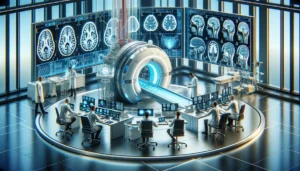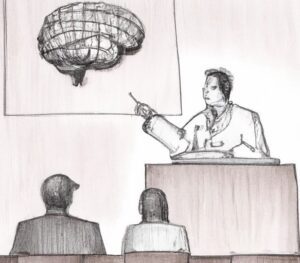Introduction
Discovering a lump or bump on the back of a person’s head can mean many things. But if the bump appears after a blow to the head, it may have serious implications. After a traumatic brain injury (TBI), a bump on the back of the head often surfaces. This can be a hematoma when blood pools beneath the skin or between the brain and skull. Understanding hematomas is vital, as they can impact recovery and require careful management.
The Hematoma Explained
A hematoma is more than just a bruise; it’s a collection of blood that has escaped from the vessels, typically due to trauma. A hematoma can form quickly on the back of the head, creating a noticeable bump. The severity can vary, with some hematomas resolving independently and others needing medical intervention.
Types of Hematomas
Several types of hematomas can form after TBI:
- Subdural and Epidural Hematomas: These are among the most dangerous types, particularly in the cranial cavity. They can lead to increased intracranial pressure, which can cause brain damage or death if not treated promptly. Symptoms may include headache, confusion, vomiting, and drowsiness, progressing to unconsciousness.
- Intramuscular Hematomas: These hematomas can be painful and cause swelling and inflammation. They can limit mobility and may also compress nerves or blood vessels. If they are large or occur in a confined space, they may cause compartment syndrome, where the pressure within the muscles builds up to dangerous levels.
- Subcutaneous Hematomas: Commonly referred to as bruises, these are usually the least serious type of hematoma. However, they can be a concern in certain populations, such as those with blood clotting disorders or anticoagulant medications.
Each type has different implications and risks, with some being medical emergencies.
Symptoms and Diagnosis of a Bump on Back of Head
Symptoms of a hematoma on the back of the head can include a lump, headache, nausea, drowsiness, confusion, and even seizures. Diagnosis typically involves a physical exam and imaging tests, such as a CT scan or MRI, to view the extent of the hematoma and its impact on the surrounding tissues.
Other Factors Influencing Severity of a Bump on Back of Head
The severity can also be influenced by the cause of the hematoma, the individual’s overall health, age, and the body’s ability to reabsorb the pooled blood. For example, a hematoma caused by a traumatic injury may be accompanied by other serious injuries, increasing the overall risk.
Potential Complications
Hematomas can lead to complications such as infection, especially if they are due to a penetrating injury or are associated with a surgical procedure. Large hematomas may also calcify, becoming hard and potentially leading to chronic pain or other issues.
Treatment and Management
Treatment depends on the hematoma size and location. Small hematomas may be monitored for changes. Larger or symptomatic hematomas might require surgical drainage to alleviate pressure. Medications to control pain and reduce the risk of further bleeding may also be prescribed.
Recovery Considerations
The body may absorb small hematomas over time, but the recovery process should be monitored to ensure no complications arise. Regular medical check-ups and imaging tests can help assess healing progress and detect any issues early.
Conclusion
A hematoma causing a bump on the back of the head after a TBI is a severe condition that requires prompt medical attention. By understanding the nature of hematomas and the importance of medical care, individuals with TBI can better navigate their recovery and mitigate potential risks. In all cases, it is crucial to monitor the symptoms of a hematoma and seek medical attention if they worsen or do not improve. Treatment may range from rest and ice to surgical intervention in more severe cases. Early assessment and management are important to prevent potential complications and to ensure the best possible outcome.






